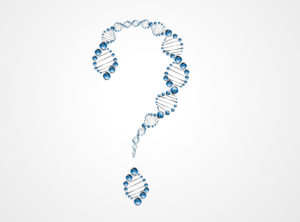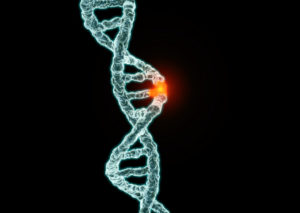
There are 3 billion (3,000,000,000) bases in my genome—in each of the cells of my body. Likewise, Johanna, the writer who sits next to me at work also has 3 billion bases in her genome. Furthermore, our genomes are 99% the same. Still, that’s a lot of places where my genome can differ from hers, certainly enough to distinguish her DNA from mine if we were both suspected of stealing cookies from the cookie jar. The power of discrimination is what makes genetic identity using DNA markers such a powerful crime solving tool.
The completion of the human genome project in 2003 ushered in a tremendously fast-paced era of genomics research and technology. Just like computers shrank from expensive, building-filling mainframes to powerful hand-held devices we now call mobile phones, genome sequencing has progressed from floor-to-ceiling capillary electrophoresis units filling an entire building to bench top sequencers sitting in a corner of a lab. The $99 genome is a reality, and it’s in the hands of every consumer willing to spit into a tube.
Commercial DNA sequencing services are promising everything from revealing your true ancestry to determining your likelihood to develop dementia or various cancers. Is this progress and promise or is it something more sinister?
As it turns out, that isn’t an easy question to answer. What is probably true is that whole genome sequencing technologies are being put into the hands of the consumer faster than society understands the ethical implications of making all of this genomic information so readily available.
The ability to sequence the genome of a tumor and design a cocktail of cancer-fighting drugs that specifically target that tumor’s genotype, may be one of the biggest wins for genome sequencing. Furthermore, as the tumor accumulates mutations and changes, sometimes becoming resistant to the initial treatment, the resistant cells can be sequenced again, quickly, and a new treatment designed. The promise of this kind of “bedside” personal genomics is tremendous (1).
However, when watching the television commercials over the past holiday season in which I was encouraged to give my relatives the gift of their past or the gift of their future by purchasing a personal sequencing kit from one of several companies, I wondered just how accurate the data were that came out of these kits.
Frankly, the data are fine. With whole genome sequencing, it is possible to search the familial data bases and make accurate matches between two individuals who are siblings yet never before knew the other existed. Adopted children who want to find biological relatives can do so, and such cases have already been solved (2), and law enforcement have solved cold cases with familial searching (3). Such matches could not be made with poor sequence data.
Questions do abound about how the sequence data of the genetic material that consumers provide to these services is protected and what privacy rights the consumer has if a professional genetic genealogist or law enforcement agency makes a match using these commercial databases (3,4).
Such sequence data can provide “match” information with any other individual in publicly available databases (commercial ones and anything that is public); some commercial companies allow you to choose not to include “match” information (e.g., We found your father’s DNA in our database. He lives on a remote island in the Berumda triangle. Surprise!). Such data, called incidental findings, or IFs, in forensic circles are a known issue with familial DNA searching and have been a subject of ethical discussion for quite some time (5). If there is an IF out there that you didn’t know about and the company you are working with provides it to you in your report, or makes it available to another customer, things could get interesting.
Determining “ancestry” per se gets trickier. If you have good birth, death, marriage records and you know when people immigrated—that is your story, and be wary of any DNA report that counters it. Admittedly an IF can change things, but would YOUR story change?
Many scientists consider “ancestry” to be a process-based concept; it refers to a person’s relationship to other individuals in their genealogical history. It is a PERSONAL understanding of your heritage—and includes all those records and stories handed down generation to generation. Your grandma’s picadillo recipe remains just that, no matter what your personal genomic sequence is.
One reason that ethnicity is hard to describe genetically is because all humans share 99% of their DNA. Many disease markers that have been thought to be associated with a particular ethnicity actually show up in many of the world’s regions—and not always because of an historic event or migration, and it turns out that some of these diseases are actually underdiagnosed in the ethnicities we don’t typically associate with them (6). Discriminating among ethnicities is difficult and unreliable because we are all so much alike—at the population level we are simply all human. Although as we generate more and more data, we may find some markers slightly more prevalent in some regions than others.
What about disease markers? Most mutations that increase risk for disease don’t do so in a vacuum. For instance, cancers often don’t develop unless there are several genetic “hits”. The disease marker may be hit number one, but environment, diet, bad luck may provide the rest—or they may not. Generally, with a genetic test, what you are learning about is an increased risk compared to something. You need to understand how the risk factor is generated to actually understand if it means anything. Most people, including this author (and I have a PhD and taught undergrad genetics for years), don’t understand probability and statistics well enough to fully understand the results of any genetic test without having a long conversation and math lesson with a licensed genetic counselor.
So, what’s the take home message? We live in fascinating times. The human genome project has ushered in an age of great promise for effective, personalized cancer treatments. Families of missing service members have more ability to find their lost loved ones than ever before. Parents looking for missing children, or children looking for missing families now have hope of finding them.
Yet, when all is considered, I return to the opening paragraph of this blog. Johanna and I are more alike than different at our most basic molecular level. And that may be the most important lesson of the human genome project. We are all more alike than different. Let’s embrace that simple truth.
Literature Cited
- Cancer Genomics—From Bench to Bedside https://www.nature.com/collections/dswwtfkdty
- A Cold Case, A Mystery and DNA https://www.promegaconnections.com/a-cold-case-a-mystery-and-dna/
- Familial Searching Solves Cold Cases—At What Cost? https://www.promegaconnections.com/familial-searching-solves-cold-cases-at-what-cost/
- Familial DNA Searching for Criminal Forensics https://www.promegaconnections.com/familial-dna-searching-for-criminal-forensics-qa/
- Incidental Findings in the Use of DNA to Identify Human Remains: An Ethical Assessment https://www.ncbi.nlm.nih.gov/pmc/articles/PMC3581719/
- Taking race out of human genetics http://science.sciencemag.org/content/351/6273/564.full
Michele Arduengo
Latest posts by Michele Arduengo (see all)
- An Unexpected Role for RNA Methylation in Mitosis Leads to New Understanding of Neurodevelopmental Disorders - March 27, 2025
- Unlocking the Secrets of ADP-Ribosylation with Arg-C Ultra Protease, a Key Enzyme for Studying Ester-Linked Protein Modifications - November 13, 2024
- Exploring the Respiratory Virus Landscape: Pre-Pandemic Data and Pandemic Preparedness - October 29, 2024



You captured the complexities very well–great insight!
Thanks Ann. It was a tough, but fun, blog to write. –Michele